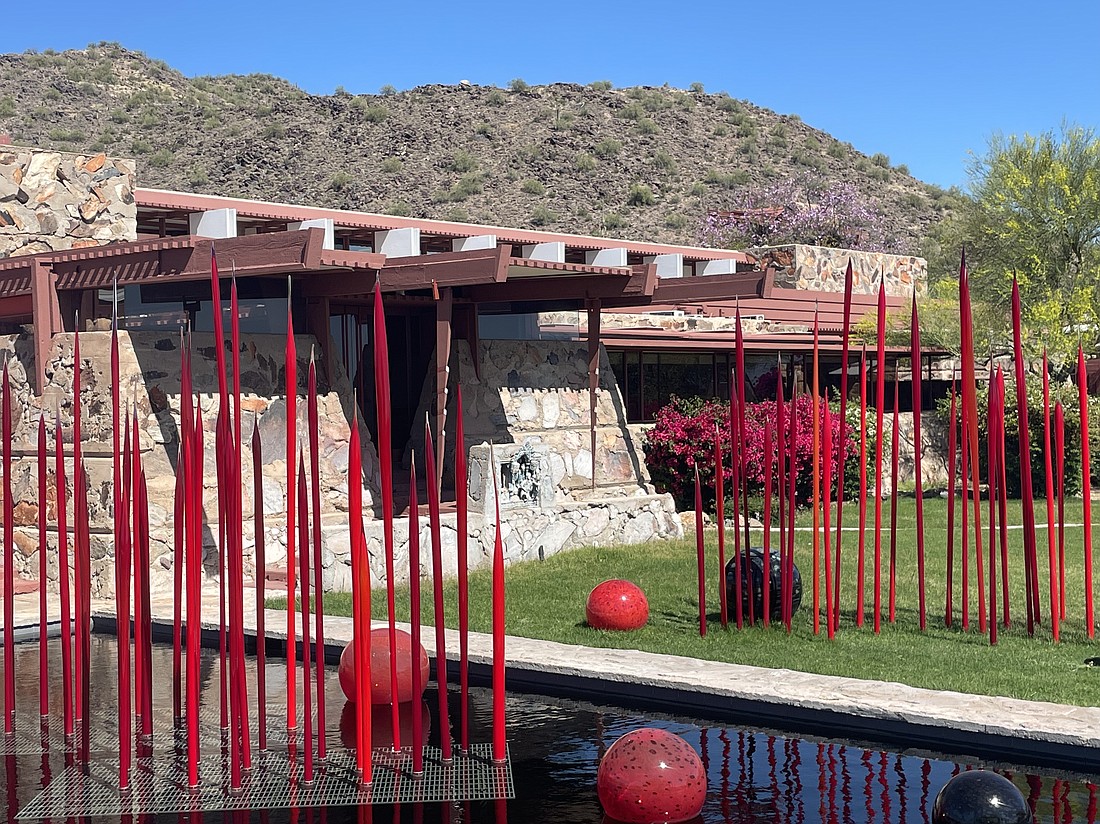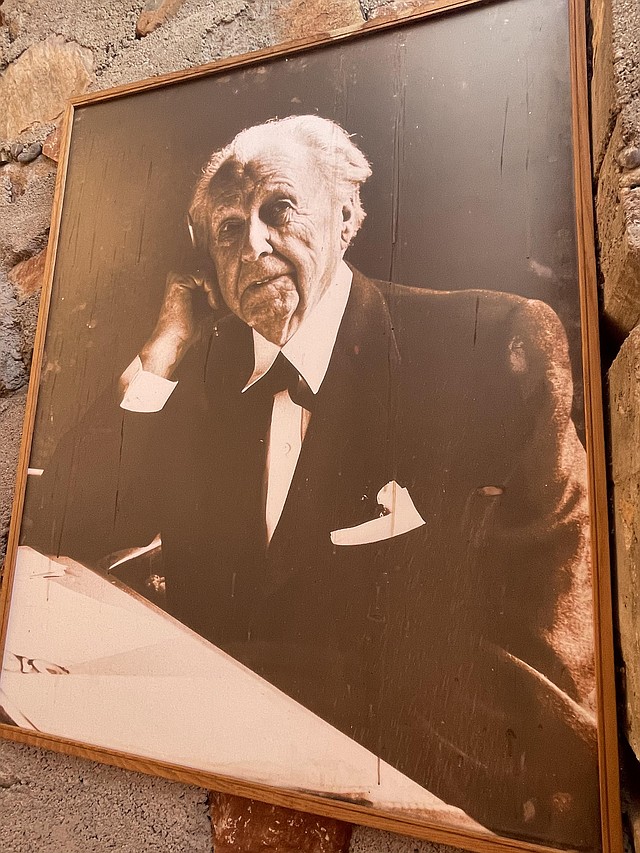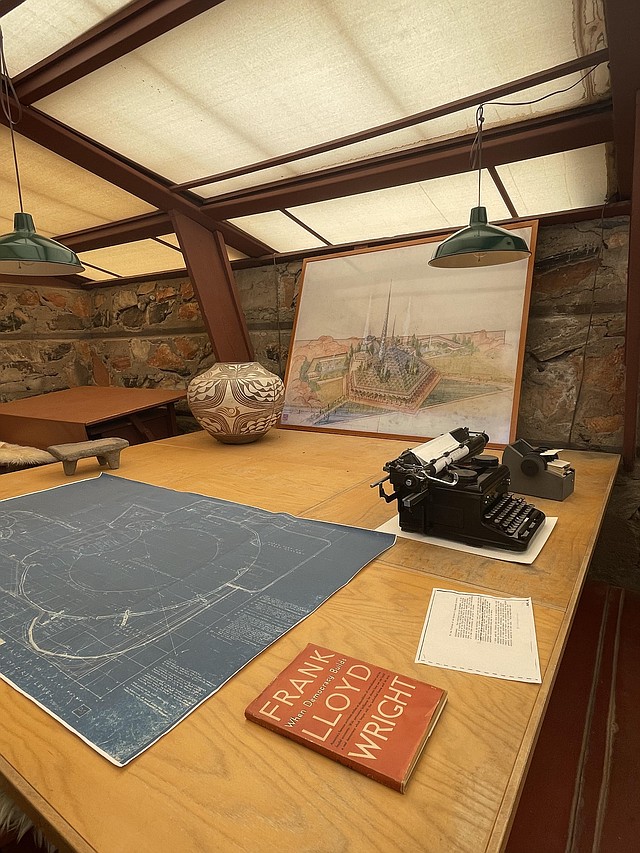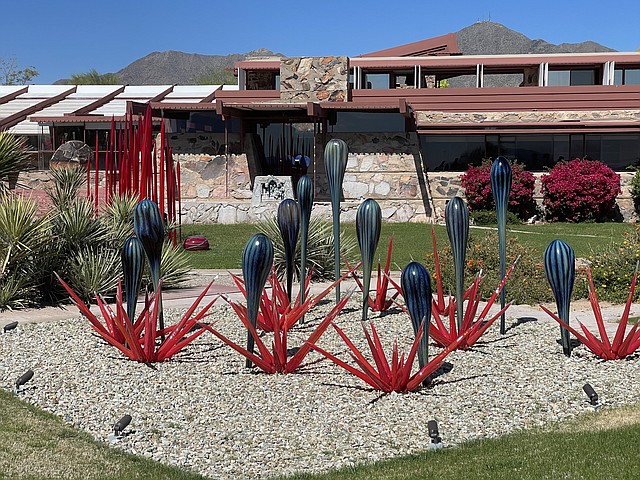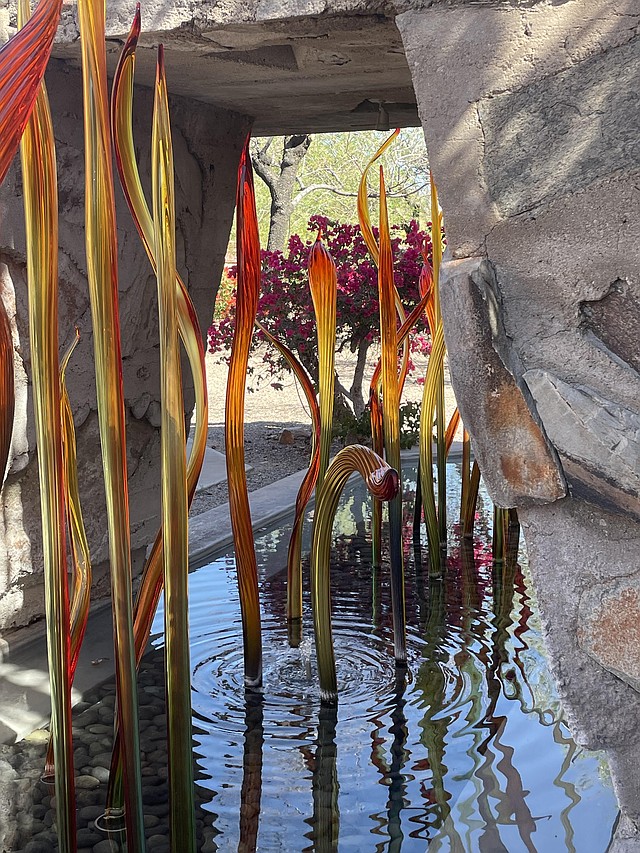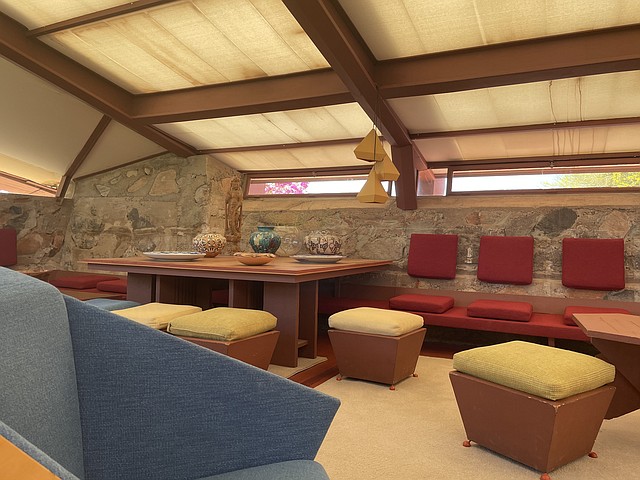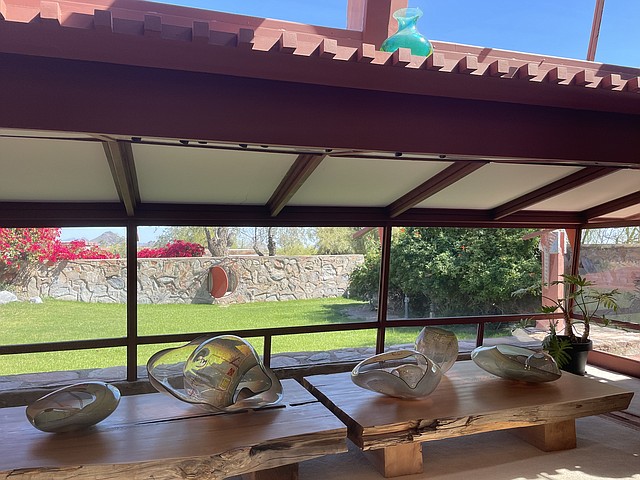Aficionados of Frank Lloyd Wright most likely have Taliesin West on their list of places to visit. After all, it’s one of the legendary architect’s famed creations and an iconic, cultural landmark in Arizona. Now, however, fans of celebrated contemporary artist Dale Chihuly need to add this UNESCO World Heritage Site to their list, too.
Taliesin West was Wright’s studio and winter retreat from 1937 to 1959. Constructed by Wright and his Taliesin Fellowship apprentices, the place served as a desert laboratory where design innovations and structural ideas could be explored in relation to the dramatic desert setting. It was here that Wright would train the next generation of designers and architects in a new way, and they would come to understand construction by actually doing it.
This architectural gem in the desert foothills of Scottsdale is currently home to a rich collection of six installations by Dale Chihuly. The exhibition, “Chihuly in the Desert,” brings art, architecture and nature together in a feast for the senses. And it marks the first time Chihuly’s work has been paired with Wright’s singular architecture.
Wright spent a lifetime exploring, inventing and redefining American architecture with the aim of designing structures that connected with their surroundings. He focused on the interaction between the built and the natural environment, a philosophy he called organic architecture.Like Wright, Chihuly has spent decades experimenting with a variety of techniques, pushing the boundaries of contemporary glass art. He revolutionized glassblowing with his large-form glass sculptures. And he, too, like Wright finds inspiration in the natural world – its forms, textures, colors and light.
For both artists, the Sonoran Desert, with its ancient saguaros and mountains, presented a unique setting and exciting backdrop for their work. This environment was in complete opposition to where they were raised. Wright grew up in upper Wisconsin, with its frigid, snowy winters; Chihuly makes his home amid the evergreen forests and moisture-rich marine climate of Western Washington.
Taliesin West is seamlessly connected to the landscape in which it was forged. Low-slung buildings made from local materials of desert sand and rock hug the horizon. They were designed to reflect the expansiveness of the desert and allow unobstructed views of the scenery.Note the use of triangular forms in rhythmic repetition throughout the property. These echo the shapes of the McDowell Mountains rising up in the distance, while the rich reds from the redwood beams are evocative of these peaks at sunset. And petroglyphs found on site served as inspiration for some of Wright’s swirling, decorative designs.
Chihuly’s installations both complement and contrast Wright’s architecture. The first, “Alabaster and Amber Spire Towers” at the Entry Plaza is a dazzling wonder. Gold and white towers of glass extend up from the ground and appear to energize the space like a chandelier does in a room. The colors evoke the landscape and the shape of the spires is reminiscent of desert plant life, like the jagged yuccas that surround the area.Next up is “Red Reeds & Niijima Floats,” a vivid, eye-catching pair of installations at the Front Pond. The reeds are tall and thin and contrast with the low buildings at Taliesin West, and their color complements that of the buildings’ beams. The long tubular-shaped glass forms require one glassblower to be elevated by a mechanical lift. He/she then blows through a pipe to get the glass to stretch, while another blower pulls the glass to the ground.
Chihuly was inspired to create “Niijima Floats” during a 1989 visit to a glass school on the Japanese island of Niijima in the Bay of Tokyo. The trip brought back childhood memories of finding Japanese fishing floats and beach glass along the Puget Sound shore. At forty inches in diameter and weighing up to sixty pounds, these “Floats” are among the largest glass spheres ever blown. Though they are associated with water, these objects can also evoke rocks or barrel cacti in the desert.
“Black Saguaros and Scarlet Icicles” on the Studio Lawn is part of Chihuly’s “Fiori” and “Mille Fiori” (Italian for “a thousand flowers”) series, which speak to the artist’s love of plants and flowers. These works integrate several standalone forms into one cohesive project. The “Scarlet Icicles” play into the “Red Reeds” of the aforementioned installation, while the “Black Saguaros” mimic the rounded shapes of the “Niijima Floats.” Their black glass encourages us to consider shape and texture instead of color and gives the impression of strength and durability like the cacti.
In the Garden Room, which was the private living area for Wright and his family, the natural world is on display with quartzite and sand walls, wood furniture and upholstery the colors of sky and red rock. Windows offer views of the landscape and on a table fronting this view is Chihuly’s “Golden Celadon Baskets.” These are a part of the artist’s “Basket” series, which was inspired after his visit to a history museum in Tacoma, where he saw Native American baskets slumping down in distorted fashion.
Through experimentation with the use of fire, gravity and centrifugal force, Chihuly discovered innovative ways to create asymmetrical vessels with thin, undulating walls. His baskets are often grouped in sets, with several small pieces nested within larger ones. Those on display here were chosen specifically for the Garden Room. Their swirly forms catch your eye, while the light through the layers mirror the environment.
At the Tower Pool, you’ll find Chihuly’s “Fire Amber Herons.” The herons are reflected in the water of this oasis in the desert and their warm colors complement the scenery. The placement of each piece of glass is precise so that as a whole, they do not overwhelm the intimate courtyard, but rather add to the beauty and provide a fresh focal point for our eyes.Chihuly’s final installation, “Marine Blue and Citron Tower” stands in majestic sentinel fashion in the center of Taliesin West’s Garden Plaza. Unity is the major force in this soaring work of art. Separate pieces are a part of a grander whole. The golden blue tower models the artist’s experimentation with “Chandeliers” that culminated in the “Chihuly Over Venice” project in the mid-1990s.If this exhibit whets your appetite for more Chihuly, head to the Desert Botanical Garden in Phoenix, where additional wonderous works by the artist can be found as part of the same exhibition.“Chihuly in the Desert” runs through June 19th.
